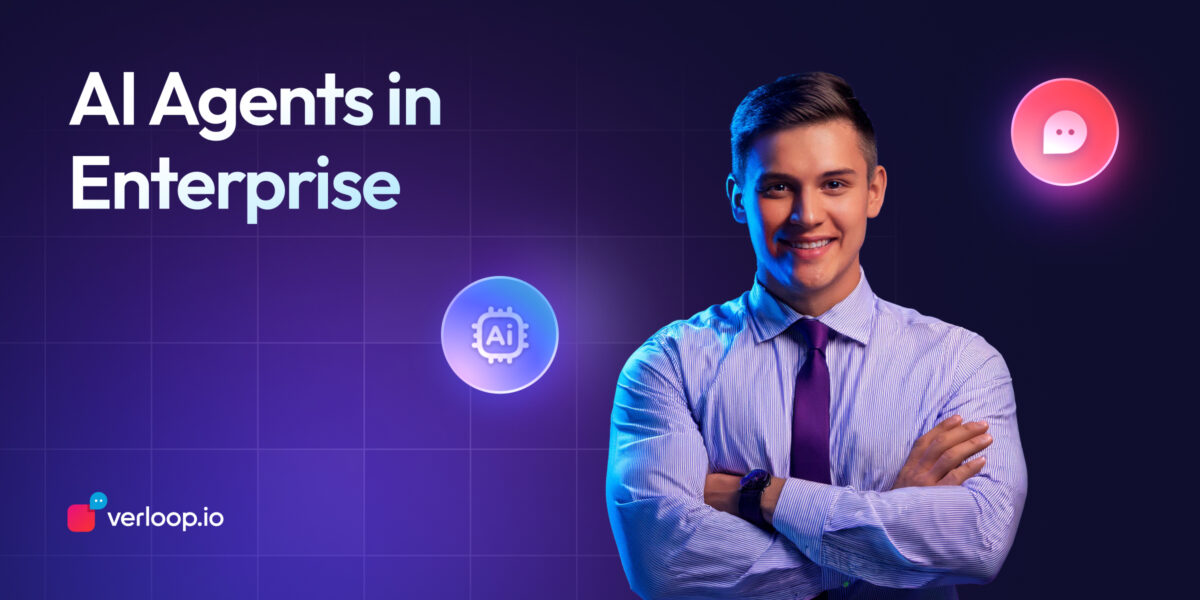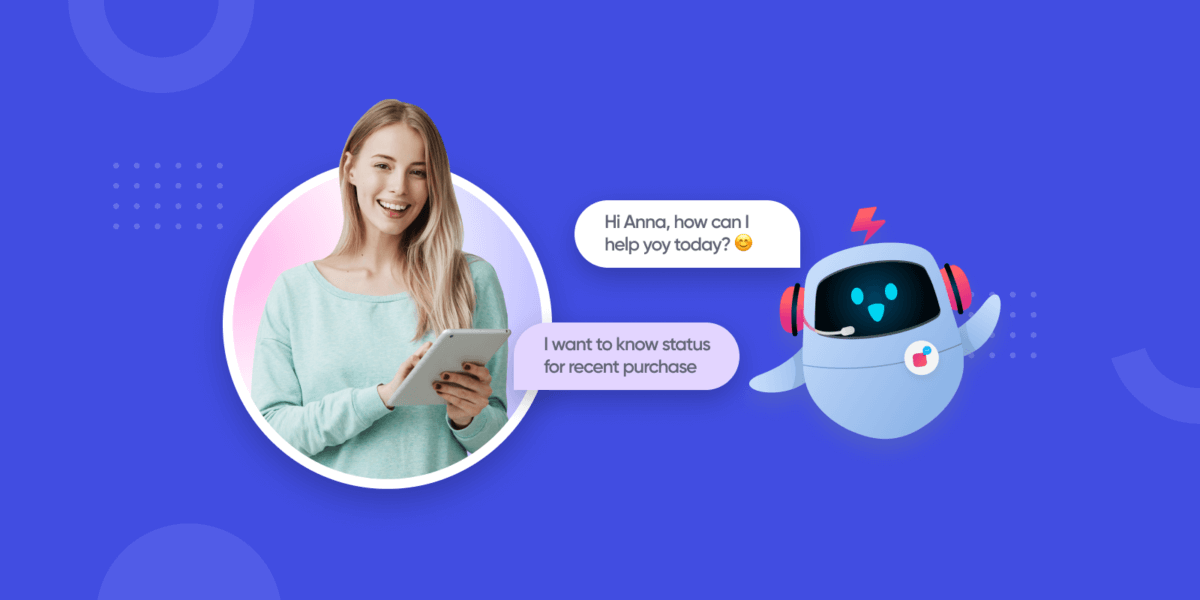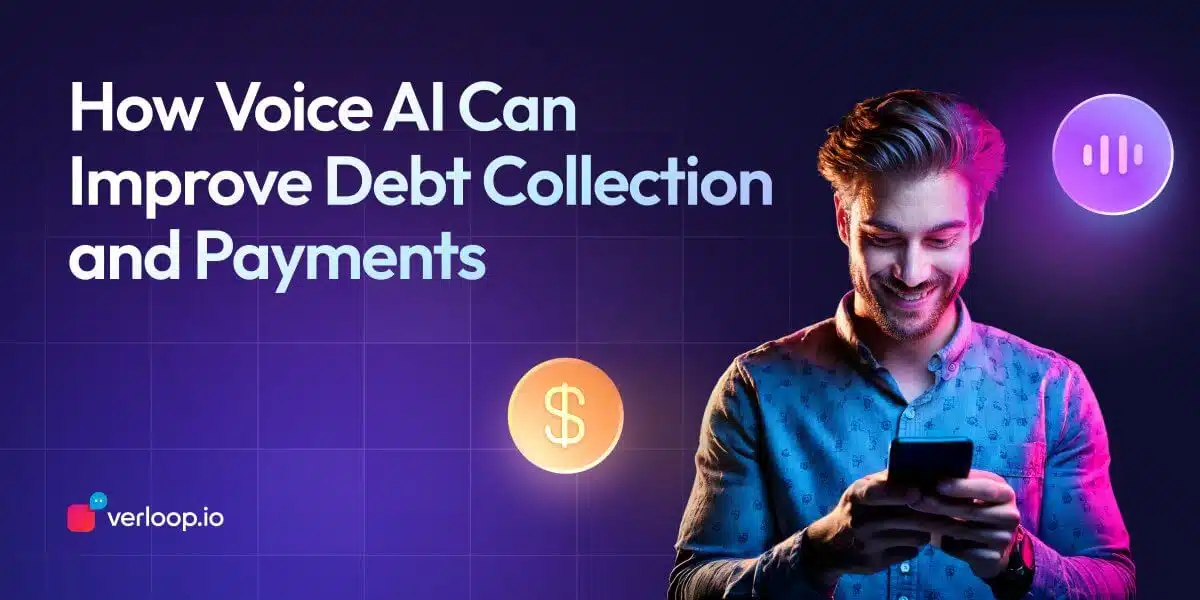
AI Agents in Enterprise: What it is and What’s Coming in 2026
- August 14th, 2025 / 5 Mins read
-
 Aarti Nair
Aarti Nair
AI Agents for Enterprise
In two years, will your AI agent be your top-performing team member? For many enterprises, that’s not a hypothetical — it’s a strategic plan in motion. Once considered niche tools, AI agents are rapidly evolving into enterprise-critical systems capable of handling complex, multi-step tasks with minimal human intervention.
The shift is happening fast. According to PwC, 67% of executives agree AI agents will drastically transform existing roles within the next 12 months. And the market is scaling just as quickly — the global AI agents market was valued at USD 5.40 billion in 2024 and is projected to reach USD 50.31 billion by 2030, growing at a staggering CAGR of 45.8% from 2025 to 2030.
What’s driving this surge? AI agents have moved beyond basic automation into a new era of adaptability, contextual awareness, and autonomous decision-making. They’re not just processing data; they’re interpreting it, learning from it, and taking proactive actions that once required human oversight.
In this blog, we’ll explore what AI agents really are in the enterprise context, how they’re being used today, and — most importantly — what’s coming by 2026 so your organisation can be ready to take full advantage of this next wave of intelligent automation.
What is an AI Agent in the Enterprise Context?
An AI agent is an autonomous or semi-autonomous system that uses artificial intelligence to perform tasks, make decisions, and interact with users or other systems — often without direct human intervention. In the enterprise context, these agents are designed to integrate deeply with business workflows, handle repetitive tasks at scale, and provide intelligent insights that support strategic decision-making.
Unlike basic chatbots or rule-based automation tools, enterprise AI agents are:
Context-aware: They retain memory of past interactions and can adapt their behaviour based on user history, preferences, and real-time data.
Multi-skilled: Capable of handling multiple related tasks in a workflow rather than operating in isolation.
Decision-driven: They can analyse data, weigh options, and select the best course of action.
Connected: Integrated into enterprise systems such as ERP, CRM, HRMS, and data warehouses.
Example in action:
A customer support AI agent in a telecom company that not only resolves billing disputes via chat but also updates the CRM, sends a confirmation email, and triggers a retention offer if the customer is at risk of churn.
A supply chain AI agent that monitors inventory levels, predicts stock shortages, and automatically places supplier orders — all while flagging potential delays for the operations manager.
By combining technologies such as Large Language Models (LLMs), Natural Language Processing (NLP), machine learning, and business logic integrations, AI agents in enterprise go beyond answering questions — they become proactive, data-informed team members.
How AI Agents Differ from AI Chatbots
It’s easy to confuse AI agents with AI chatbots — after all, both use artificial intelligence to interact with users. But while they share some similarities, their capabilities, purpose, and scope are very different.
AI chatbots are primarily conversation-focused. They’re designed to simulate human-like dialogue, usually within a set context, to answer questions, guide users, or collect information. Many still rely on predefined scripts or simple intent recognition, even if powered by modern AI models. They’re great at handling single, straightforward interactions — for instance, telling a customer their order status when provided with a tracking number. But here’s the shortfall: once that information is given, the chatbot stops. It doesn’t check whether the order is delayed, take action to fix the problem, or follow up proactively.
AI agents, on the other hand, are action-focused and can converse like a human. They combine conversational ability with decision-making, system integration, and autonomous task execution. In the same order-tracking scenario, an AI agent would go beyond just sharing the tracking link. It could identify that the delivery is running late, notify the customer, issue a partial refund, update the CRM, and schedule a follow-up — all without human intervention.
Key Differences Between AI Agents and AI Chatbots
| Feature | AI Chatbots | AI Agents |
|---|---|---|
| Primary Purpose | Engage in conversation and answer queries | Execute multi-step tasks, make decisions, and perform actions |
| Decision-Making | Follows predefined rules or simple AI responses | Analyses data, weighs options, and acts autonomously |
| Scope of Work | Single, isolated tasks (e.g., answering FAQs) | End-to-end workflow management and complex problem-solving |
| Integration Level | Limited integration with systems | Deep integration with enterprise tools (ERP, CRM, HRMS, APIs) |
| Context Awareness | Basic session memory, often resets | Retains long-term memory across interactions for personalisation |
| Adaptability | Limited adaptability based on intent detection | Dynamically adapts based on historical data, real-time inputs, and external triggers |
By understanding this difference, enterprises can see where a chatbot may be enough for quick, isolated questions, and where an AI agent’s ability to act, decide, and integrate into core systems makes it a game-changer.
How AI Agents Work in the Enterprise?
AI agents in enterprise settings operate as intelligent, connected systems that can understand, decide, and act — often without human intervention. They’re built on multiple layers of technology that work together to deliver speed, accuracy, and adaptability in business processes.
1. Large Language Models (LLMs)
LLMs form the core of an AI agent’s language understanding abilities. They process natural language — from customer messages and employee requests to technical documents — and extract meaning far beyond keyword matching. This means they can interpret tone, implied intent, and even industry-specific jargon.
For example, if a manufacturing company uses an AI agent for internal procurement, an employee might type, “We’re running low on M4 bolts again — same issue as last month.” The LLM can understand that “same issue as last month” refers to a recurring supply shortage, check past records, and trigger a re-order from the approved vendor without the employee having to explain further.
2. Memory Systems
Memory is what separates a truly contextual AI agent from a basic automation script. Short-term memory allows the agent to stay consistent within a single interaction, while long-term memory lets it recall information from weeks or months ago — creating continuity across sessions and channels.
If a SaaS provider uses an AI support agent, it might recognise that a client’s last three tickets were about API integration errors. So when the same client messages, “It’s failing again after the last update,” the agent recalls the pattern, retrieves the client’s API configuration, and offers a tailored fix immediately — without making them repeat their history.
3. Enterprise System Integrations
AI agents become far more powerful when integrated with enterprise systems such as ERP for operations, CRM for customer management, HRMS for workforce data, and industry-specific tools. These integrations let them pull or push information in real time, enabling complex workflows to be completed without human intervention.
For instance, if a retail chain uses an AI inventory agent, it can detect from the ERP that stock levels for a best-selling sneaker are below threshold. The agent could cross-check sales forecasts, place a restock order through the supplier’s API, update the POS inventory, and notify the merchandising team — all automatically.
4. Decision-Making Frameworks
Beyond retrieving data, AI agents use decision-making logic to choose the best course of action. They analyse structured data (like transaction logs) alongside unstructured data (like emails or meeting transcripts) to assess options and act in line with business rules and objectives.
If a logistics company uses an AI agent to manage deliveries, it could spot that a major highway has been closed due to an accident. The agent would evaluate alternative routes, compare cost and fuel efficiency, and reassign deliveries accordingly — all while sending updated ETAs to customers automatically.
By combining LLMs for understanding, memory systems for context, enterprise integrations for action, and decision-making frameworks for smart choices, AI agents function less like software tools and more like proactive, reliable colleagues who can operate at scale, 24/7.
Core Components of an AI Agent (Chat & Voice)
While AI agents share a common foundation, the technology stack behind a chat AI agent and a voice AI agent comes with different design priorities. Both must be intelligent, reliable, and context-aware, but their operational requirements vary depending on how users interact with them.
1. Natural Language Understanding (NLU) and Large Language Models (LLMs)
Whether in chat or voice, the agent needs advanced NLU to interpret user intent accurately. LLMs help it understand nuance, implied meaning, and even incomplete sentences. In voice interactions, this means correctly interpreting spoken variations, accents, and filler words.
2. Context Management and Memory Systems
AI agents require both short-term memory (within the current session) and long-term memory (across interactions) to maintain conversational continuity. In chat, this means remembering what a user said earlier in the thread; in voice, it means doing so under strict timing constraints so turn-taking feels natural.
3. Latency Management
Latency is the time it takes to respond. It is critical, especially for voice AI. While a slight delay in chat might go unnoticed, in voice a delay longer than 300–500 milliseconds can feel unnatural and break the flow. This requires optimised pipelines for Voice Activity Detection (VAD), speech recognition, LLM processing, and speech synthesis.
4. Multimodal Input and Output Processing
For chat AI agents, this means handling text, images, links, and even document uploads. For voice AI agents, it involves capturing audio, converting it to text via ASR (Automatic Speech Recognition), generating a response, and then converting it back to speech using TTS (Text-to-Speech) — all while managing latency.
5. Integration Layer
Enterprise-grade AI agents rely on deep integration with CRM, ERP, HRMS, and APIs to execute tasks. In chat, this could be retrieving a customer’s last order details; in voice, it could be confirming an appointment and updating a scheduling system mid-conversation.
6. Decision-Making and Business Logic Engine
AI agents need a rules engine or workflow orchestrator to align responses with business goals. This ensures, for example, that a voice agent handling a refund request follows the right compliance steps before issuing it.
7. Personalisation Modules
By using stored variables and historical data, the agent can adjust tone, style, and recommendations based on user profile. For voice, this could mean recognising the caller’s past issues and proactively addressing them; for chat, offering a product recommendation based on recent browsing.
8. Fallback and Escalation Mechanisms
No matter how advanced the AI, there will be cases it can’t resolve. Smart fallback ensures the conversation is handed over to a human agent with the full context intact — whether that’s a chat transcript or a voice call transfer with a case summary.
Chat AI Agent vs Voice AI Agent – Component Comparison
| Component | Chat AI Agent | Voice AI Agent |
|---|---|---|
| Natural Language Understanding (NLU) & LLMs | Interprets text inputs, supports emojis, abbreviations, and multi-language text | Interprets spoken inputs, handles accents, filler words, and varied speech patterns |
| Context Management & Memory | Retains session context across chat threads, supports long-form conversation history | Retains context in real time with strict timing constraints for natural turn-taking |
| Latency Management | Slight delays acceptable (1–2 seconds) without harming experience | Ultra-low latency critical (<500ms) for natural conversation flow |
| Input/Output Processing | Processes text, images, files, links; outputs rich text, media, and interactive elements | Captures audio, uses ASR to convert to text, processes via LLM, converts back to speech via TTS |
| Integration Layer | Connects with CRM, ERP, HRMS to fetch and update data instantly | Integrates with enterprise systems and executes tasks mid-call without breaking flow |
| Decision-Making & Business Logic | Executes workflows, applies rules, and triggers automated actions | Executes workflows and applies compliance checks in real time during conversations |
| Personalisation Modules | Adjusts tone, recommendations, and responses based on user profile and history | Adapts speech tone, pace, and content to caller’s history and preferences |
| Fallback & Escalation | Transfers chat to human with conversation history intact | Transfers call to human with full call context and summary for seamless handover |
Reasoning Paradigms
Two common paradigms shape how AI agents solve multi-step problems:
1. ReAct (Reasoning and Action)
In this model, agents “think” and plan after each action, using a Think–Act–Observe loop. For example, after processing a customer’s query, the agent evaluates the response, determines the next tool or data source to use, and updates its reasoning. This step-by-step approach, similar to Chain-of-Thought prompting, makes it easier to handle complex scenarios and adapt in real time.
2. ReWOO (Reasoning Without Observation)
Here, the agent plans all steps upfront before executing any action. This reduces unnecessary tool usage, speeds up processing, and allows the user to review the plan in advance. In an enterprise context, this can save time and resources — for example, by mapping out an entire workflow for approving a supplier contract before running any checks or sending any notifications.
Types of AI Agents
AI agents aren’t built with a single, universal architecture. Their design depends on the complexity of the task, the amount of available data, and the required level of autonomy.
Simple Reflex Agents
Simple Reflex Agents act purely on a set of predefined rules, reacting only to the current input without memory. They’re ideal in fully observable environments where the agent has all necessary information at once. For example, a smart thermostat might switch on heating at 8:00 p.m. daily, regardless of the current temperature or whether anyone is in the room.
Model-Based Reflex Agents
It uses both current perceptions and stored information to maintain an internal model of their environment. This allows them to handle partially observable and changing conditions. Think of an autonomous cleaning robot that not only detects obstacles like furniture but also remembers which areas have already been cleaned, preventing it from going over the same spot repeatedly.
Goal-Based Agents
It take things further by pairing an internal model with a set of defined objectives. They evaluate multiple action sequences to determine the best route to achieve their goal. A delivery routing agent, for example, could calculate the fastest route to a destination and automatically reroute the driver if live traffic data shows a faster alternative.
Utility-Based Agents
Utility-based agents not only work towards a goal but also measure which solution offers the highest “utility” — the optimal balance of cost, time, and other priorities. A corporate travel booking agent might compare flights based on price, journey time, and airline reliability, recommending the trip that offers the best overall value rather than simply the shortest duration.
Learning Agents
These agents have the ability to improve their performance over time by learning from each interaction. They can start with a set of rules or goals and adapt as they encounter new situations. An e-commerce recommendation engine works this way — it begins by suggesting products based on general trends, then refines its suggestions by analysing each customer’s browsing and purchase history, becoming more accurate with every transaction.
Current Applications of AI Agents in Business
With their ability to combine understanding, context retention, and action, AI agents are already proving their value across multiple enterprise functions. They’re not just automating isolated tasks — they’re integrating into core workflows to deliver speed, accuracy, and personalisation at scale.
Customer Support
In customer service, AI agents are taking on everything from intelligent ticket triaging to real-time chat and voice assistance. They can prioritise incoming cases based on urgency, match them to the right agent or department, and even resolve common queries autonomously. If an escalation is required, they hand over to a human with the full conversation history, ensuring the customer never has to repeat themselves. For example, if a telecom customer calls about repeated billing errors, a voice AI agent can detect the account’s history, address the issue immediately, and escalate to a billing specialist if a manual adjustment is needed.
Sales Enablement
AI agents in sales don’t just handle inbound queries — they actively support revenue generation. They can score leads based on behavioural data, initiate personalised outreach via email or messaging, and draft tailored proposals using CRM insights. If a prospect has been inactive, an AI agent can trigger a re-engagement workflow, sending a targeted offer or content relevant to their last interaction. This allows sales teams to focus on closing deals rather than sifting through cold leads.
Operations
Operational AI agents excel at process automation, compliance monitoring, and predictive maintenance. They can handle back-office tasks like invoice processing, order fulfilment, and report generation with minimal human oversight. In industries like manufacturing, they can monitor sensor data, flag potential equipment failures before they occur, and schedule maintenance automatically — avoiding costly downtime and ensuring compliance with safety regulations.
HR & Talent Management
In HR, AI agents streamline talent acquisition and employee support. They can screen candidates by matching CVs against role requirements, schedule interviews, and even conduct initial video assessments using predefined criteria. For onboarding, they guide new hires through document submission, training modules, and policy acknowledgements. Once employees are onboarded, AI agents can serve as always-available HR assistants, answering policy questions, processing leave requests, or reminding staff of mandatory training deadlines.
AI agents are not replacing humans in these roles — they’re complementing them. By taking over repetitive, time-consuming tasks, they free teams to focus on high-value activities that require creativity, strategy, and emotional intelligence. And as adoption grows, the range of applications will only expand, setting the stage for what’s coming by 2026.
Benefits of AI Agents in Enterprise
The adoption of AI agents isn’t just about keeping up with technology trends — it’s about unlocking measurable business value. By combining advanced understanding, contextual awareness, and autonomous execution, AI agents deliver benefits that impact both operational efficiency and the customer experience.
Increased Productivity and Reduced Manual Workload
AI agents take over repetitive, time-consuming tasks, allowing teams to focus on higher-value work. In finance, this could mean automating reconciliation and report generation; in customer service, it’s handling routine queries so human agents can focus on complex cases. The result is a leaner, more productive workforce without increasing headcount.
24/7 Availability and Scalability
Unlike human teams, AI agents don’t clock out. They can operate continuously, handling surges in demand without compromising service quality. This is particularly valuable for enterprises with global operations, where customers, suppliers, or internal teams need support across multiple time zones.
Enhanced Decision-Making Through Data-Driven Insights
Because AI agents work across integrated enterprise systems, they’re in a unique position to spot trends, flag anomalies, and make informed recommendations. For example, an operations AI agent could detect early signs of supply chain disruption and suggest alternative suppliers before stockouts occur.
Cost Optimisation Through Automation
By reducing the need for manual intervention, AI agents lower operational costs. They also help minimise errors — avoiding the downstream expense of rework, lost opportunities, or compliance penalties. In some workflows, a single AI agent can replace the effort of multiple full-time staff without sacrificing quality.
Enterprises that have already adopted AI agents are seeing tangible returns — McKinsey reports up to 40% faster task completion rates where AI agents are deployed effectively. Over time, these efficiency gains compound, leading to stronger margins, improved service levels, and a competitive edge in markets where responsiveness matters.
Challenges in Adopting AI Agents
While the benefits of AI agents are compelling, successful adoption in the enterprise isn’t without its hurdles. Understanding these challenges early helps organisations plan for smoother integration and better ROI.
1. Data Privacy and Compliance
AI agents work by processing large volumes of business and customer data. In regulated industries such as finance, healthcare, and government, ensuring compliance with frameworks like GDPR, HIPAA, or ISO 27001 is critical. Without proper governance, enterprises risk regulatory fines and reputational damage.
2. Integration with Legacy Systems
Many enterprises still rely on older ERP, CRM, or custom-built tools that weren’t designed for AI integration. Connecting these with modern AI agents can require complex middleware, API development, or even partial system overhauls — which adds cost and extends timelines.
3. Change Management and User Adoption
Even the most advanced AI agent can fail if teams don’t use it effectively. Employees may be sceptical about automation replacing their roles, or unsure how to collaborate with an AI counterpart. Clear communication, training, and showing early wins are essential for gaining buy-in.
4. Ethical Concerns and Bias Mitigation
AI agents trained on biased data can produce skewed results, impacting fairness and trust. In HR recruitment, for example, bias in historical hiring data could lead to unbalanced shortlists. Enterprises must invest in bias detection, ongoing model audits, and ethical AI frameworks to avoid these pitfalls.
5. Measuring ROI and Proving Value
While AI agents can deliver efficiency gains, proving that value to leadership often requires clear KPIs and robust reporting. Without tracking metrics like time saved, cost reduction, or customer satisfaction uplift, the case for scaling AI agents across departments can be harder to make.
These challenges don’t mean AI agents aren’t worth pursuing — they simply highlight the need for a strategic approach to adoption. With the right planning, governance, and change management, enterprises can overcome these barriers and prepare for the next wave of AI innovation.
What’s Coming in 2026 – The Future of AI Agents
The pace of AI agent adoption is accelerating, and by 2026 their role in enterprises will shift from experimental tools to mission-critical assets. Across regions and industries, we’re seeing a clear trajectory: smarter, faster, and more deeply integrated AI agents that reshape how work gets done.
In Asia Pacific, adoption is being driven by rapid technological advancements, large-scale digital transformation projects, and increased R&D investment by both the public and private sectors. China, Japan, and South Korea are leading the way:
In China, Ping An Insurance uses AI agents in customer service to handle over 60% of inquiries, significantly improving response times and customer satisfaction.
In Japan, Mitsubishi UFJ Financial Group (MUFG) employs AI agents to streamline loan approvals and enhance fraud detection, improving banking efficiency and security.
In South Korea, AI agents are embedded in smart city projects, managing traffic flows and aiding crime prevention — proof of a strong commitment to AI-driven urban infrastructure.
Singapore’s government is also promoting AI adoption, integrating AI agents into healthcare for diagnostics and patient management.
This regional momentum reflects a wider global trend. In North America, companies across industries are increasingly deploying AI agents to handle customer inquiries, deliver real-time support, and manage routine interactions — reducing pressure on human service teams while boosting satisfaction scores.
The AI agent ecosystem is expanding into almost every enterprise function:
Productivity & Sales: Tools like Grammarly and HubSpot enhance content creation, workflow efficiency, and lead generation.
Marketing: AI platforms such as Surfer and Albert drive SEO optimisation, campaign management, and hyper-personalised experiences.
Customer Support: Chatbots like Ada and sentiment analysis tools like Observe.AI improve resolution rates and customer sentiment tracking.
Legal: AI solutions such as Harvey streamline research, while LexCheck ensures compliance accuracy.
Product Management: AI optimises resource allocation and automates project workflows.
Coding & Software Development: AI aids debugging, testing, and continuous deployment pipelines.
Business Intelligence & Finance: From data analytics and forecasting to fraud detection, AI agents are becoming embedded decision-support systems.
Looking ahead to 2026, several key trends will define AI agents in the enterprise:
Greater Workflow Automation: More routine tasks like data entry, scheduling, and reporting will be entirely automated, freeing employees to focus on strategic and creative work.
Advanced Context Awareness: With increasingly refined NLP, AI agents will handle complex, multi-turn conversations while retaining context across multiple channels.
Proactive AI Decision-Making: Agents will not just react to instructions but anticipate needs, offering recommendations or initiating actions before a human requests them.
Specialised AI Roles: From sales and marketing to customer support, software development, and compliance, AI agents will evolve into role-specific experts.
Partnership-Driven Innovation: Collaborations between technology providers and enterprises will accelerate, creating tailored AI solutions for industry-specific needs.
By 2026, enterprises that embrace AI agents early will have a significant competitive advantage — not just in efficiency, but in agility, innovation, and customer experience. Those waiting on the sidelines risk being left behind as AI agents move from “nice to have” to essential infrastructure.
Unlock Enterprise-Ready AI Agents with Verloop.io
AI agents are no longer experimental — they’re becoming the backbone of enterprise productivity, customer engagement, and decision-making. From goal-driven automation to adaptive learning, the potential to scale operations without scaling costs is enormous. But tapping into that potential requires more than just plugging in technology; it calls for the right architecture, reliable integrations, and a partner who understands both AI and enterprise workflows.
That’s where Verloop.io’s AI Agents come in. Built with advanced reasoning, context retention, and both chat and voice capabilities, our AI agents are designed to handle high-volume, high-value interactions across sales, customer support, marketing, and operations. Whether it’s reducing resolution times, automating complex workflows, or delivering personalised customer experiences at scale — Verloop.io ensures your AI agents are enterprise-ready from day one.
The future isn’t about replacing teams; it’s about equipping them with AI that works seamlessly alongside them to achieve more, faster, and smarter. And with market projections showing AI agents growing from USD 5.40 billion in 2024 to USD 50.31 billion by 2030, the time to act is now.
💡 Ready to see how AI agents can transform your enterprise?
Book a personalised Verloop.io demo today and start building AI-powered workflows that deliver measurable impact from the very first interaction.
Frequently Asked Questions (FAQs)
1. What is an AI agent in the enterprise context?
An AI agent in the enterprise context is a software-based system capable of reasoning, decision-making, and executing tasks autonomously based on data, rules, and learned behaviours. Unlike basic chatbots, AI agents can work across multiple workflows, adapt to changing inputs, and operate in both chat and voice environments.
2. How is an AI agent different from an AI chatbot?
AI chatbots are primarily designed for conversational interactions, often limited to pre-defined scripts or narrow contexts. AI agents go beyond this — they can plan, reason, use tools, process complex data, and even take actions in external systems without human intervention, making them suitable for broader business operations.
3. What industries benefit the most from AI agents?
AI agents are making an impact across customer support, sales, finance, healthcare, manufacturing, logistics, and marketing. For example, they can handle over 60% of customer inquiries in insurance, streamline loan approvals in banking, or manage traffic flows in smart cities.
4. Are AI agents only for large enterprises?
Not at all. While large enterprises often lead adoption due to resources and scale, mid-sized and even small businesses can implement AI agents to automate repetitive tasks, enhance customer experiences, and improve operational efficiency — often at a lower cost than expanding headcount.
5. What are the main components of an AI agent?
Core components include Natural Language Processing (NLP) for understanding human input, reasoning engines for decision-making, integrations with enterprise systems, context retention for multi-step tasks, and, in the case of voice agents, low-latency speech recognition and synthesis.
6. How secure is data handled by AI agents?
Security depends on the vendor and implementation. Enterprise-grade AI agents, such as those from Verloop.io, are built with data encryption, compliance with standards like GDPR, and role-based access controls to ensure that sensitive information remains protected.
7. What’s the future of AI agents in 2026?
By 2026, AI agents will likely be more autonomous, capable of handling complex multi-department workflows, integrating with a wider range of enterprise tools, and using more refined language understanding models. Expect them to play a central role in decision-making, customer engagement, and operational efficiency across industries.
8. How can I get started with AI agents?
Start by identifying repetitive or high-volume processes in your organisation that could be automated. Then, choose an AI agent provider like Verloop.io that offers both chat and voice capabilities, robust integrations, and the flexibility to scale as your needs grow.






